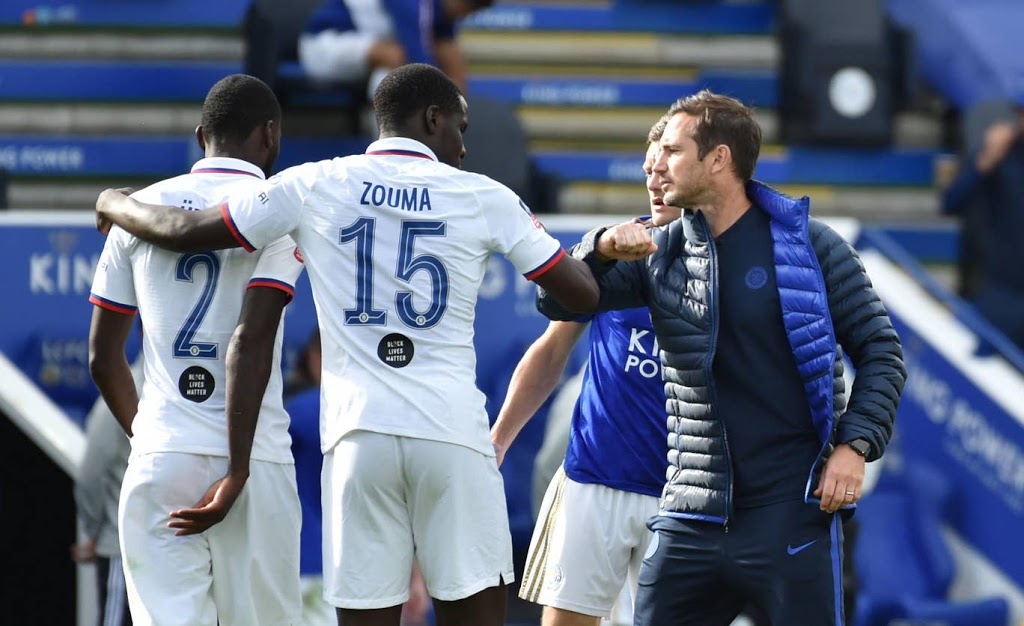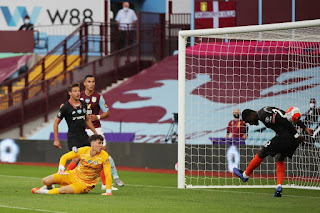
For every Chelsea fan, these are very exciting times and what lies ahead even promises more excitement. The Blues are signing unquestionable talents for the coming season and have won all three games since the lockdown leaving them in a strong position in the top four race. Timo Werner and Hakim Ziyech have signed while the pursuit of Kai Havertz looks set to continue as Leverkusen’s only hope of keeping the multipurpose star was Champions League qualification which they failed to secure.
Wins before the lockdown against Liverpool and Everton saw a lot of positivity, especially after the performance of young Billy Gilmour. Chelsea have secured more wins against Aston Villa, Manchester City and most recently Leicester City, but there remain a lot of questions that these wins look to be hiding. Questions about Chelsea’s approach play, the spacing between midfield & defence, the defence in general and it’s defending of set-pieces. These are the issues that statistics companies and other football visualization setups don’t show you, these are the problems the eyes see, and they need immediate solving.
SET PIECES
Chelsea from the start of the season have looked inept at defending set-pieces but the fact that we are almost at the end of the season and continue to struggle with this same issues is mind-boggling. It is befuddling how a Champions League side can continue to concede from basic set-pieces. Valencia’s winning goal in the Champions League opening game is one of many examples so far; a simple Dani Parejo ball is turned in by an unmarked Rodrigo and it continues to be the theme.
Lampard has switched between zonal marking, man-for-man marking and at some point, a combination of both. Chelsea continue to be vulnerable in this situation, the goal conceded at Aston Villa was from an aerial ball, the goal against City was a different kind (Chelsea fans continue to endure the pain caused by Kepa’s short hands) but when City had corners and freekicks, Chelsea looked in danger. Fernandinho’s free header which Kepa tipped over the bar comes to mind. Against Leicester, The Witcher, sorry Çağlar Söyüncü and Johnny Evans both had chances as Chelsea continued to look vulnerable at this. Söyüncü’s header at the back-post was worrying as Johnny Sins Willy Caballero came out flapping above heads and completely missed the ball but for Azpilicueta’s intervention.
 |
| Chelsea’s defence all over the place for Aston Villa’s opener. (Reuters) |
Time and time again Chelsea have looked suspect at this and yet no solutions seem to be forthcoming. The goalkeepers (both are guilty) are neither commanding aerially nor are the defenders capable of organizing a proper defensive block. Of course, better defenders and a more capable goalkeeper should help but proper drills that teach reaction seem more important no? Chelsea have conceded 41 goals this season in the premier league alone *stares blankly*. Only Seven teams have conceded less while Brighton in 15th, Tottenham in seventh & Arsenal in ninth all have conceded 41 times. For Pete’s sake, Newcastle have conceded only one goal more than Chelsea. Around February, Sky revealed that Liverpool concede a goal every 120 corners, Chelsea, on the other hand, every 11. Jürgen Klopp after the game against Chelsea thanked his assistant Peter Krawietz & other analysts for exposing Chelsea’s vulnerability at set-pieces from which Liverpool scored twice in a 2-1 win. Poor marking at a freekick gifted Bobby Firmino the first while Trent Alexander-Arnold added a second from a direct freekick.
BUILDUP & PRESS ORGANIZATION
Not every team will play the slick one-touch passing of Pep Guardiola’s teams to escape the press but as a team that wants to dominate with the ball, the buildup sets the precedent and allows shifting the opposition into uncomfortable territory. Proper ball movement based on opposition tendencies and not just repeated passes will do the trick. Pep is notorious for preparing his team for every detail, but the buildup is where his work is most fascinating, he relies on a goalkeeper good with his feet and two centre-backs also very comfortable with the ball at their feet. At Bayern Munich, he constantly dropped Xabi Alonso between Mats Hummels & Jérôme Boateng to form a three at the back during the buildup.
Independent findings from Michael Cox showed that the Bundesliga had the least pass completion in the last 10 years and this is not due to a lack of technical quality but due to the press. Most teams in the Bundesliga look to press and harry players into mistakes, it can be called naïve at times but to each his own. This three-at-the-back system helped to stretch any team’s first line of press, goading them into leaving massive gaps between the midfield & defence. They could regurgitate the ball till it broke through the press or ping it out wide to Franck Ribéry or Arjen Robben who could accelerate the damage. With City, Guardiola has used a proper three-at-the-back system (City used a 3-5-2 system at the beginning of the 2017/2018 season till Benjamin Mendy suffered the first of many injuries), he has also used a proper back four, shaping his squad in the now-familiar 2-3-5 while trying to build out. This is the kind of work that goes into bringing the ball out properly and forming effective attacks while maintaining a shape that allows the team to defend counters.
 |
| Chelsea keeping compact against Manchester City. (PA) |
Lampard’s Chelsea have been anything but tactful when it comes to building out. Lampard stated in one interview how he doesn’t really want his team playing with structure, alluding to predictability and how he wants his team to be aggressive. This is valid too. Zidane has been referred to by the media as the handclapping coach mostly for his ‘lack of tactical acumen’ which sees his team sort themselves out on the pitch rather than follow specified tactical instructions. The difference is that we do not have Sergio Ramos, we have Kurt Zouma, neither do we have Raphaël Varane, we have Antonio ‘Hustle’ Rüdiger. We do not have Marcelo at left-back, we have Marcos Alonso. Toni Kroos, Luka Modric & Casemiro in midfield also give them delectable options when building out. These are some of the finest players in the world in their positions and what they can do with the ball is amazing, Oftentimes, Rüdiger is hitting hard diagonals into players with such ferocity that makes it hard to control. Kurt Zouma is probably the pound for pound defender at Lampard’s disposal but his awkwardness on the ball and the shape he contorts his body to when dealing with the press is worrisome, he also has a fine diagonal in him which can be beautiful and at other times annoying. His short passing game leaves so much to be desired (see his pass to Emerson in the first half against Leicester which the Brazilian-Italian duly replied with an equally chaotic pass). Fikayo Tomori is still getting used to top-flight football and has a stray pass in him, Andreas Christensen is the club’s most cultured passer out of defence as he proved against City. He brought the ball out calmly, passing into feet and starting attacks off the block, there were less positional errors in this game as the low block helped to create compactness that the team only has when playing against big teams which force them to defend deep. When Chelsea have to be more expressive with the ball, they constantly fall into traps that expose structural issues in the setup.
A report by The Times stated that Chelsea might be looking to part with at least two of their centre backs, Lampard might be getting better defenders, but it won’t address the structural problems that affect the play. Set-piece defending remains an issue and it may require a specialist rather than new defensive personnel, a more commanding aerial presence between the posts too could help stop crosses constantly floating to the back post. One might argue about how it is the team and not Lampard’s fault, then remember that Derby County had the same structural issues. An attack-minded team, they pressed aggressively without proper organization, leaving gaps for opponents to exploit. Structure when pressing is as important as structure when playing out from the back and at the moment, this Chelsea team has shown no semblance of it. More worrying is that the new acquisitions are two players that require structure to function optimally; Hakim Ziyech in his first season was maligned until Erik Ten Hag came in and structured the football around his playmaking talents. Timo Werner this season has hit his greatest heights so far after Julian Nagelsmann came in, finding a way to make him deadlier by shifting him towards the left, allowing him to combine with Christopher Nkunku and play off Patrick Schick or Yussuf Poulsen. It will be interesting to see if Frank Lampard can fix these issues or if the new personnel can help paper over these problems, but we need to understand that there are problems that won’t be changed by constantly changing shapes & formations.
READ: How does Timo Werner fit into Lampard’s Chelsea?
In truth, Lampard is only in his second season in management and still learning on the job. However, he knows more than most what needs to be worked upon to make Chelsea serious title challengers again.
BY: Daniel Ochei




2 comments on “Lampard and the pitfalls of Chelsea’s defending”